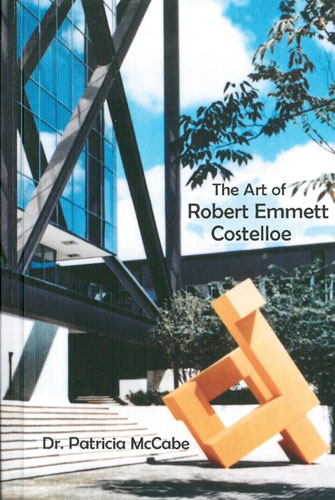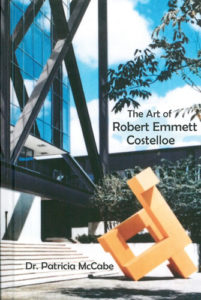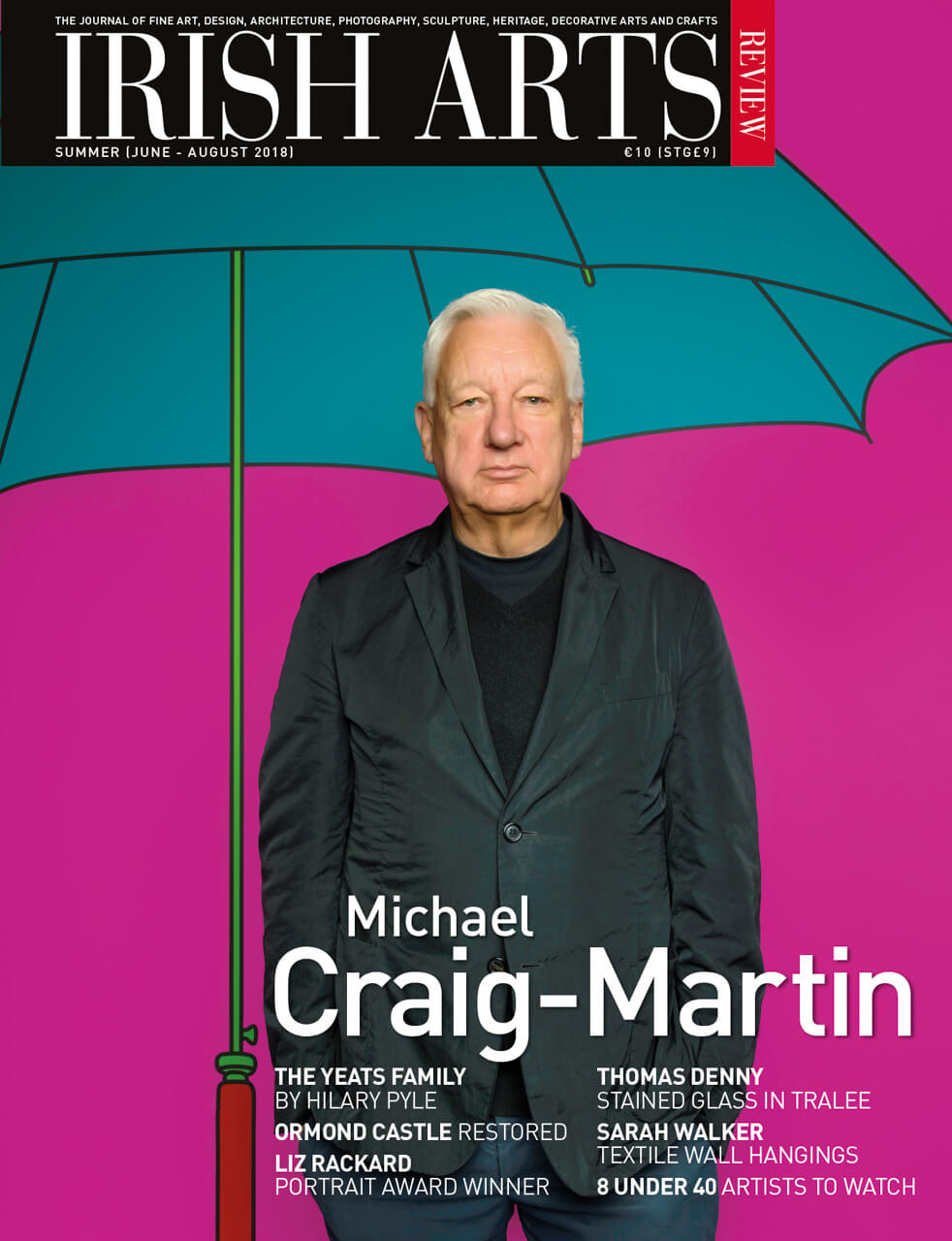
 The Art of Robert EmmetT Costelloe
The Art of Robert EmmetT Costelloe
Patricia McCabe
Patricia McCabe, 2018
pp 169 fully illustrated h/b
€40.00/ £30.00 ISBN: 978-1-38-885096-8
Reviewed by Christina Kennedy
The Art of Robert Emmett Costelloe by Patricia McCabe brings to light the promising career of this young Irish artist, sadly curtailed by his death in 1974, at the age of 31, and therefore little known today, that is, until this publication.
Patricia McCabe has patiently gathered surviving documentation on this artist, sometimes known as Robin Costelloe, in particular of his highly productive years, 1964-1974. Costelloe, who worked in a variety of media was singled out in many reviews as an emerging and important contributor to modern art developments in Ireland.
Exhibiting from 1962 at the Irish Exhibition of Living Art, Costelloe transferred that year from the National College of Art, Dublin to the Central School of Arts and Crafts, Camberwell, (now Central St Martins), from whence, in 1964, he took leave of absence to do a course at the Academia della Bella Arte, Rome. What paintings are known from the Rome period seem in tune with a post-war sense of transitory existence and Cold War anxiety. They focus on nature as a fundamental basis and on organic impulse, with subject matter such as abstracted female and bird-like forms, sensual and poetic, and relate to approaches explored by Patrick Scott and by Morris Graves of the US Northwest School (which included Mark Tobey) who lived in Ireland from 1955-64.
After Rome, when he returned to Camberwell, Costelloe concentrated on ceramic as a medium. A series of terracotta figurines, visceral and disturbing, which he himself attributed to ancient Irish sources and his interest in Aztec art, was exhibited in the Alwin Gallery, Brook Street, London.
The ‘tech‚’ aesthetic of the forms, like computer parts, and their glyph-like repetition, melds ancient sign systems with Pop Art genre’s forms
Costelloe was commissioned to create a functional sculpture-wall to screen off the carpark of AIB’s first HQ building, Lansdowne House, which opened in 1967 that year. The building itself is comprised of precast window-wall units in grid format, modelled on corporate American minimalist architecture, albeit scaled to its Victorian locale, and reflective of Ireland’s growing economic prosperity. Costelloe’s sculpture-wall, perhaps making a virtue of limited resources, is created from moulded concrete, assembled from 9 one-metre-long panels of varying height, individually designed. The artist devised a system with the engineering concrete company to create moulds from polystyrene which were imprinted with the heated metal shapes of cogwheels, large nuts and bolts and random other mechanical parts, into which the concrete was subsequently poured, to create raised designs on the panels when dry. The ‘tech‚’ aesthetic of the forms, like computer parts, and their glyph-like repetition, melds ancient sign systems with Pop Art genre’s forms. In the building’s foyer Edward Delaney’s large-scale composite bronze sculpture The Fisherman, 1967, with its intermittent ‘cabochon‚’ clusters of quartz and coloured glass, echoes the textured nature and raised design motifs of Costelloe’s wall.
Most notable and best preserved of Costelloe’s other such mural sculptures are those that overlay each of the seven gables that project from Newmarket-on-Fergus‚’ centralised church, Our Lady of the Holy Rosary, Co Limerick.
In the US in 1970, Costelloe turned to making large-scale, geometric, metal sculptures to complement modular architecture, of a kind closely aligned with that of renowned American sculptor Tony Smith who was also significant to the work of Brian King, John Burke, Michael Bulfin and Michael Warren. Chief among Costelloe’s surviving works is the multi-component sand-blasted concrete work, now titled The Elephants, c.1971, in Winston-Salem College Campus New Haven, North Carolina, where Costelloe taught and Mayo, 1973, a 4-metre high, yellow painted steel sculpture at Greenboro, NC. Of the three large-scale painted aluminium-plate sculptures, fabricated and temporarily installed at the artist’s expense at Union Carbide Plaza, Park Avenue, New York, (which failed to sell), one survives, entitled Kanturk, 1973, (10.0584 x 3.9624×3.9624 metre (33x13x13 foot)) now at the Mint Museum, in Charlotte, NC. Robert Costelloe had also resumed painting from the late 1960s with two shows in the Ritchie Hendriks Gallery, the youngest artist shown by David Hendrik. His canvasses are striking for their large-scale and depict stylised, cellular and vegetal forms in rich hues which attracted critical response at the time. Three such paintings represented the artist in ‘Art Irlandais Actuel‚’, an exhibition shown in Paris in 1973 to celebrate Ireland’s entry to the EEC and which was later presented in the Municipal Gallery under the title The Young Artist – Aos √ìg, a testament to the appreciation and sense of the potential of this artist’s work who during his brief life distinctly featured in international trends in Irish art.
Christina Kennedy is Senior Curator and Head of Collections at IMMA.



